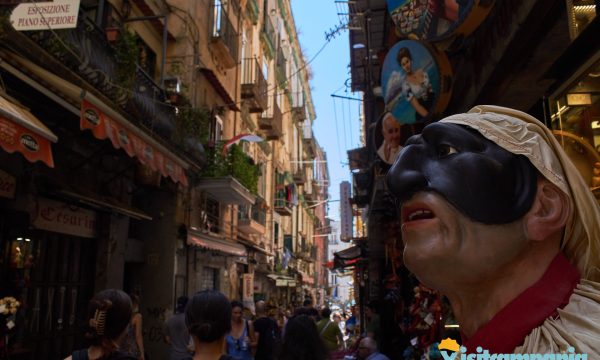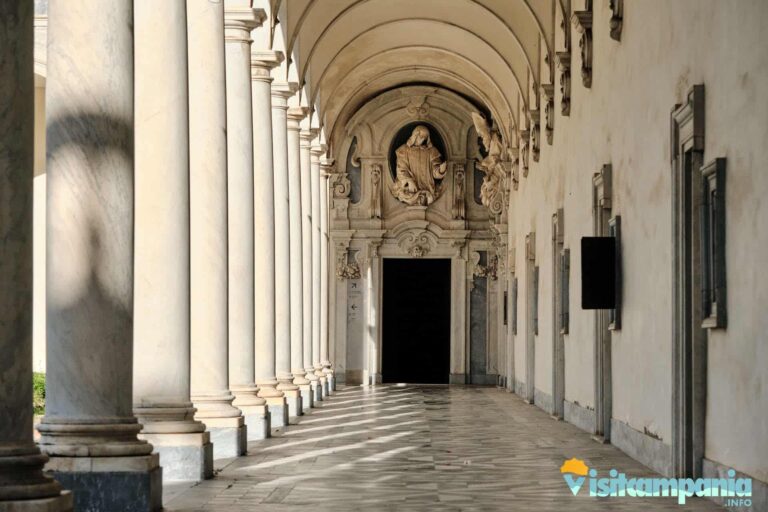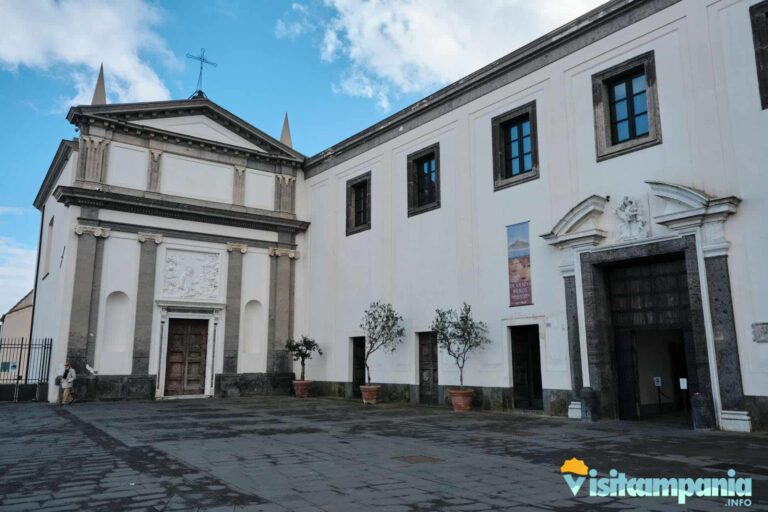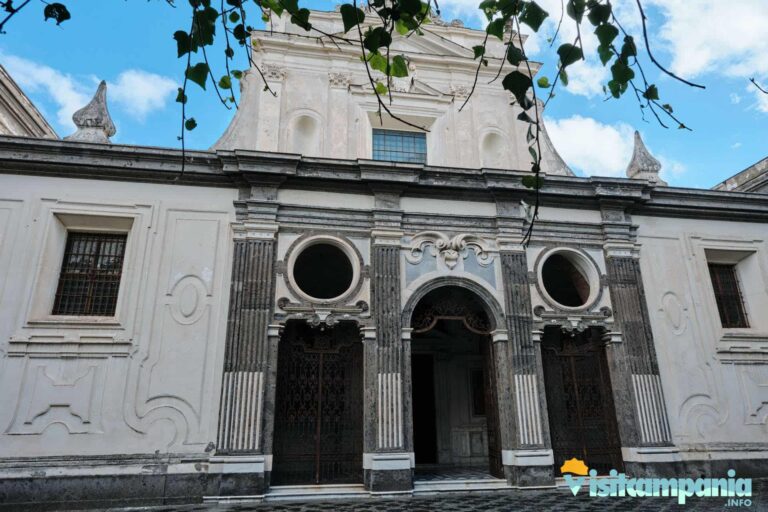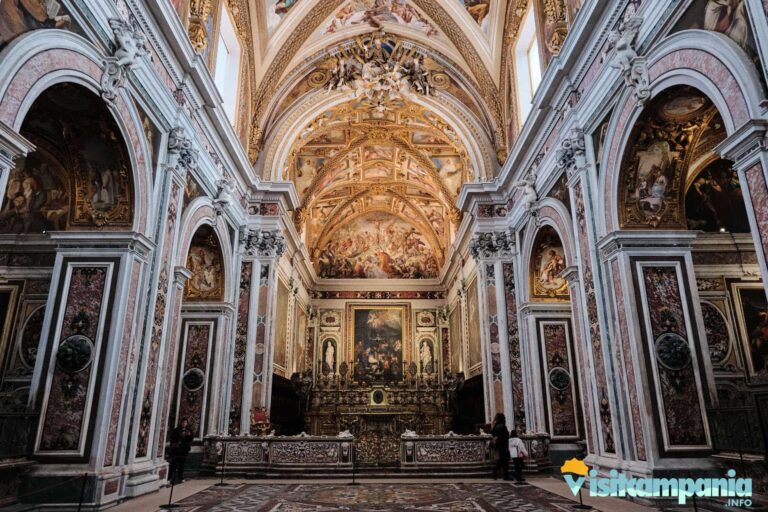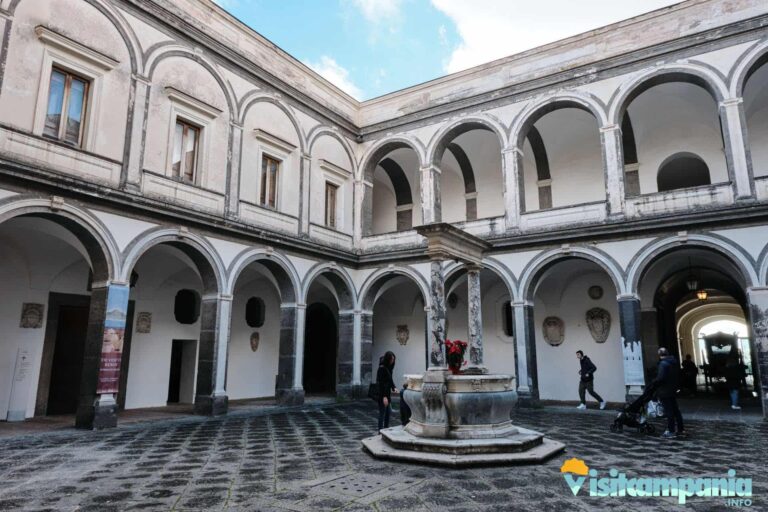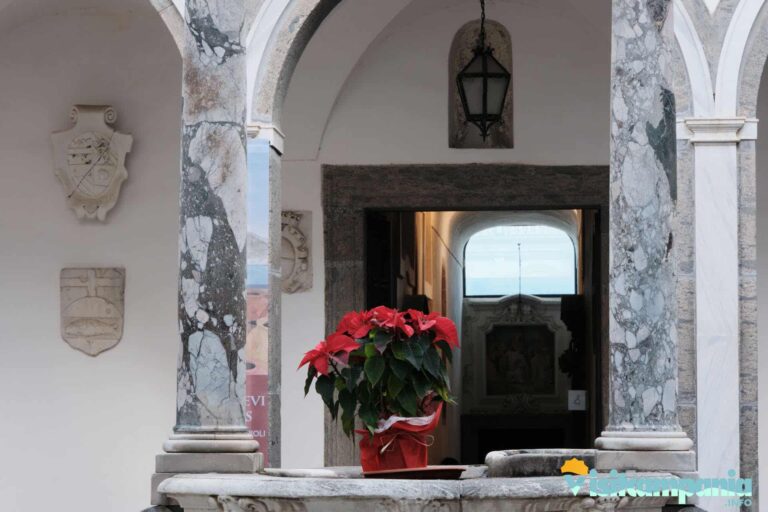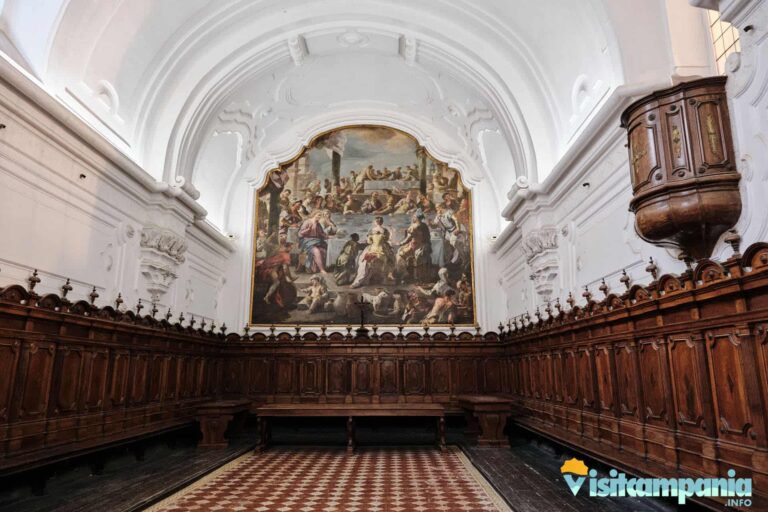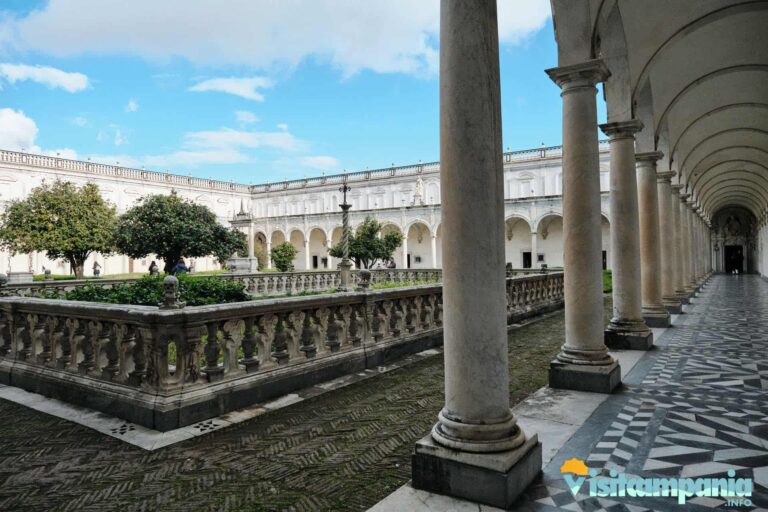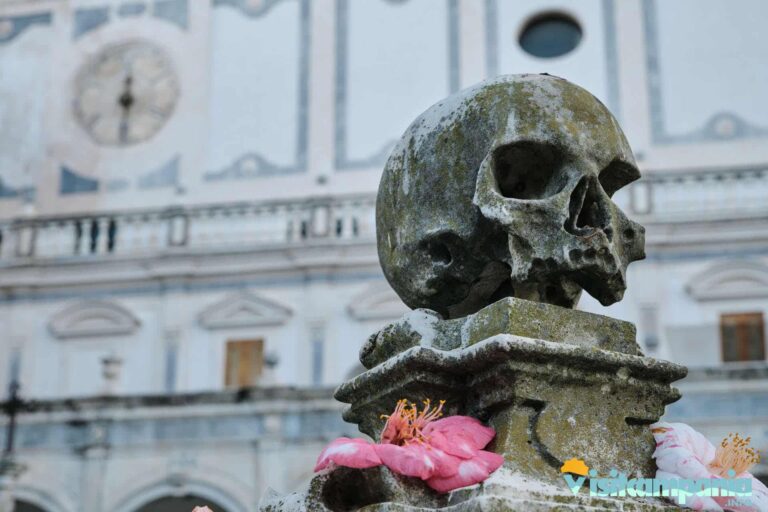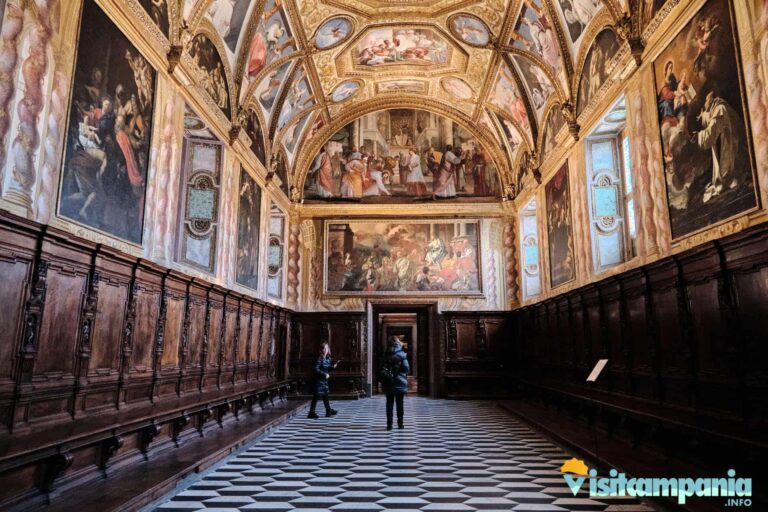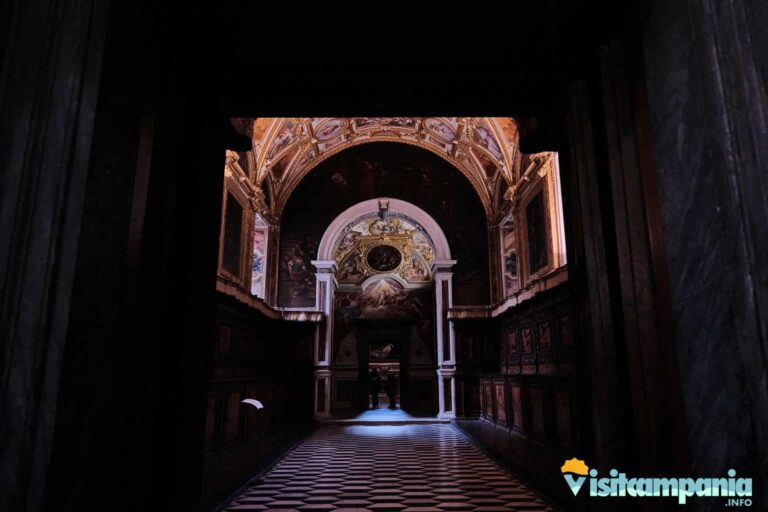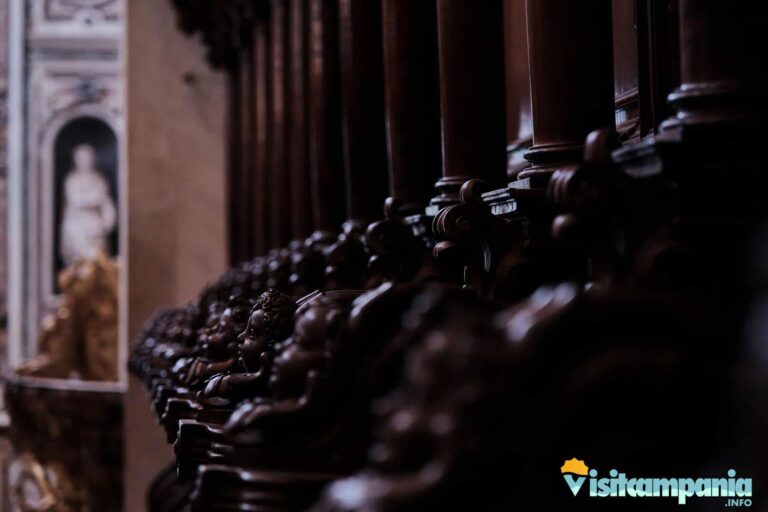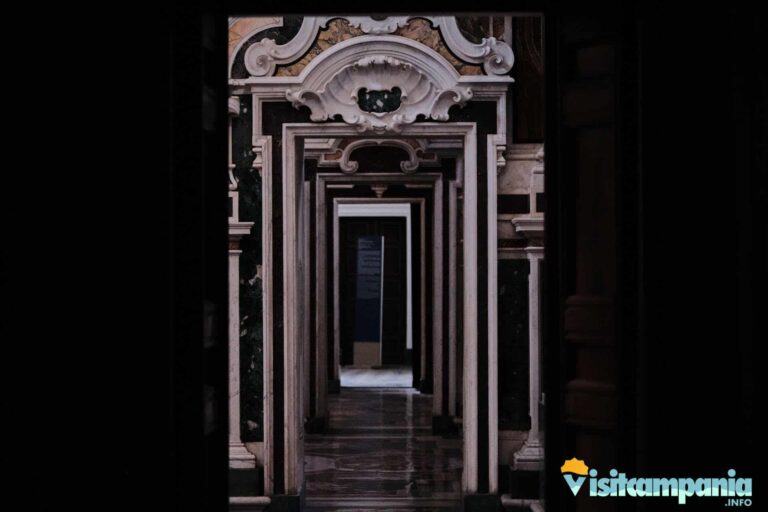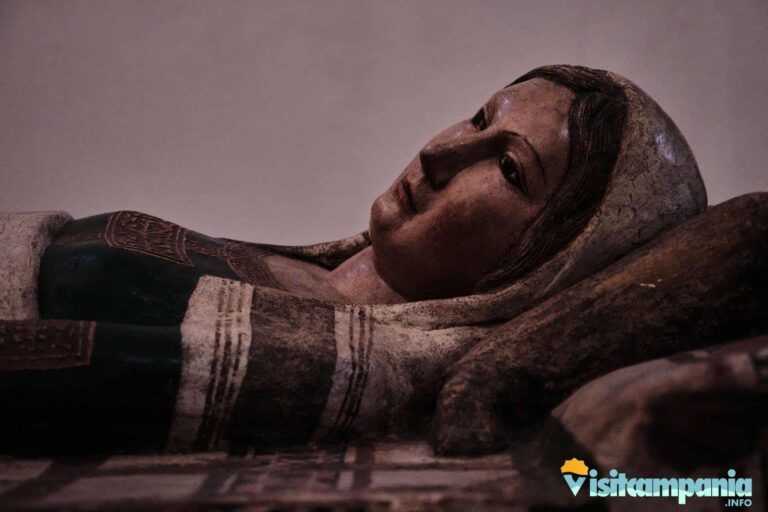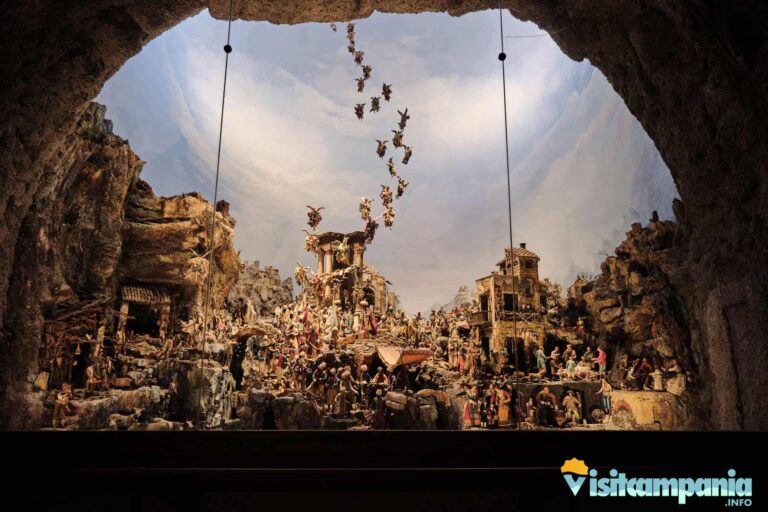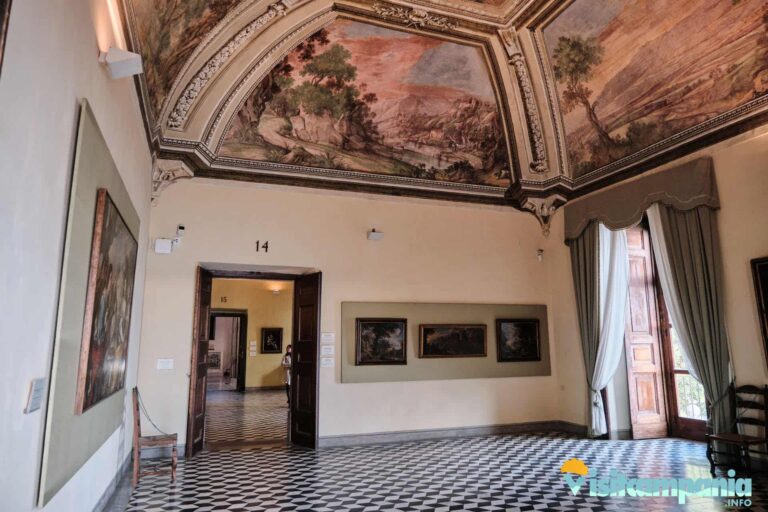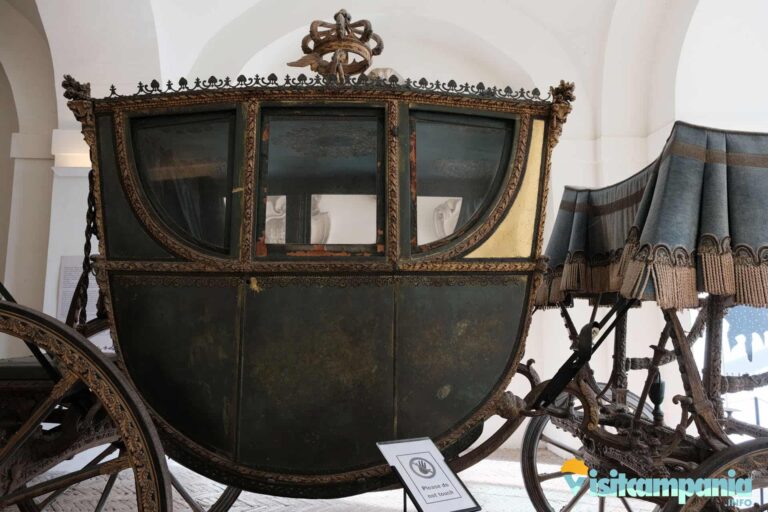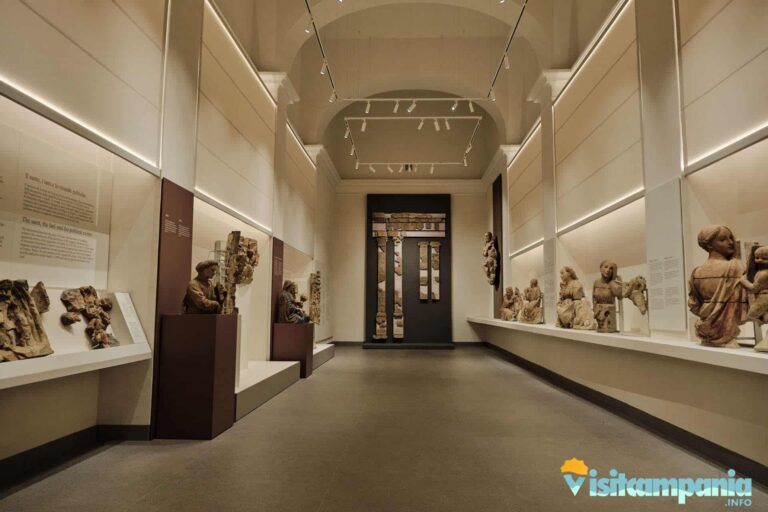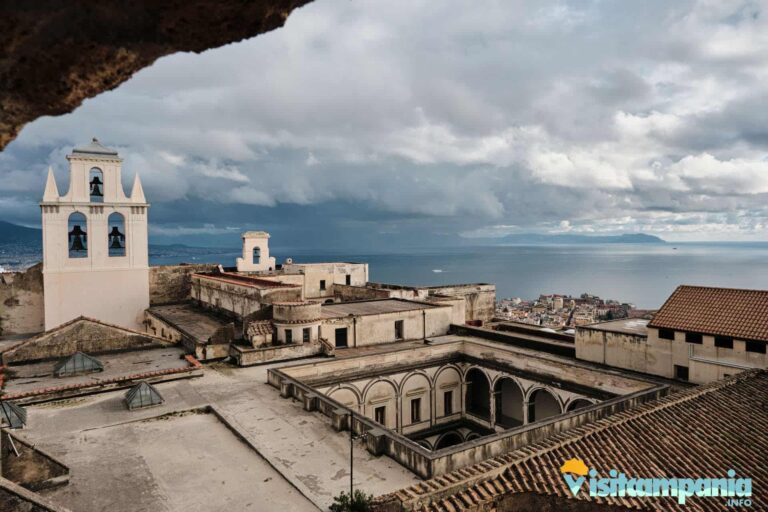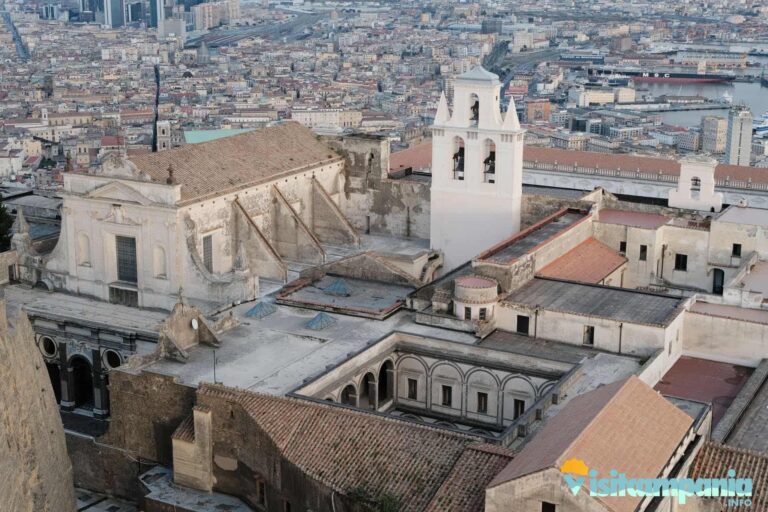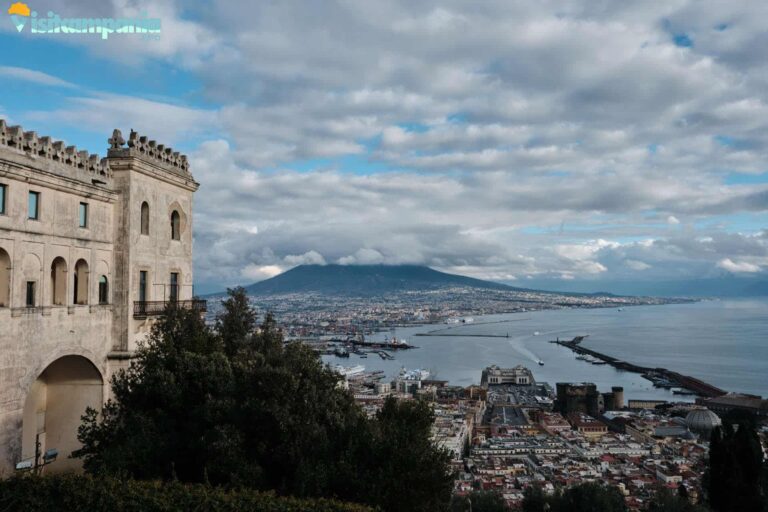The Chartreuse and Museum of San Martino: immerse yourself in the art and history of Naples
From the top of the Vomero hill, the Chartreuse and Museum of San Martino dominates the Gulf of Naples. Its white baroque stuccoes stand out against the yellow tuff of the adjacent Sant’Elmo Castel and are clearly visible from various areas of the center, in particular from Plebiscito square.
Born as a monastery of the Carthusian order under the Angevin domination, from the late Middle Ages it shares the fascinating history of Naples. Over the centuries it has undergone changes in architectural style and intended use until it became, after the unification of Italy, a museum.
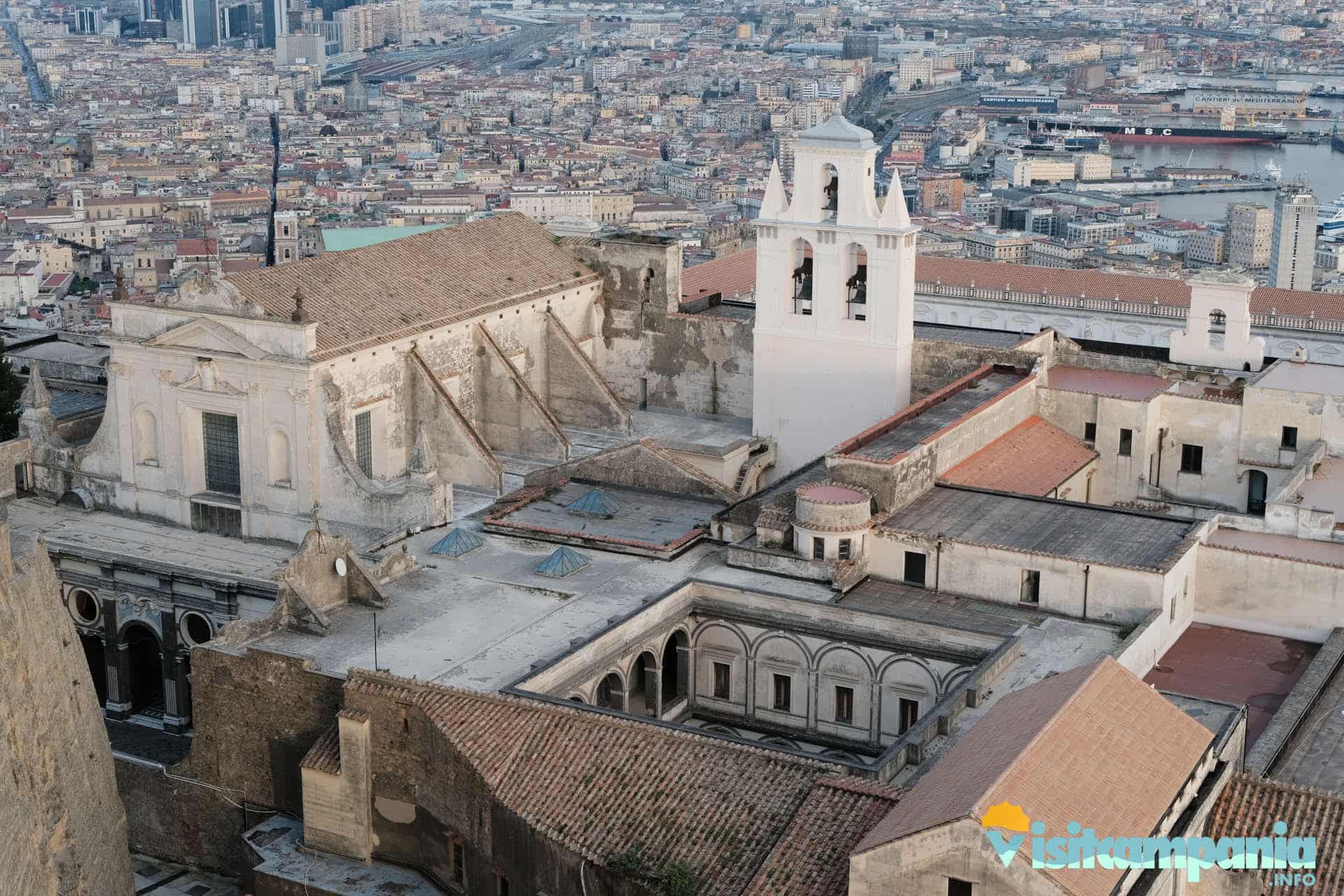
An unmissable destination for any tour of the city, a visit to the San Martino complex allows you to immerse yourself, with a single entrance, in two distinct but connected worlds:
- The Chartreuse, with the evocative places dedicated to spiritual research (the Church, the sacristy, the refectory, the large cloister). It is the first part of the visit and allows you to see the fundamental environments of the monastic complex in its original state;
- The Museum, with its extraordinary collections aimed at preserving and handing down the history and traditions of Naples, capital of the Southern Kingdoms. Set up, however, within the monastic complex, it predominates the collections on display compared to the environments that host them;
The construction of the Chartreuse di San Martino and its evolution over time
From Gothic origins to Baroque reconstruction
The construction of the chartreuse began in 1325 under the Angevin domination and, chronologically, make it the second charterhouse in Campania after that of San Lorenzo in Padula whose construction work began in 1306. The consecration and inauguration date back, however, to 1368 even if the monks began to live in the complex thirty years earlier.
The original structure was Gothic as evidenced by the basement and a few other elements of the monastery.
However, what we can admire today is a complex in late Tomorrow and Baroque style, the result of the work of various architects and artists who lasted, mainly, from 1589 to 1656.
It is to this period, in fact, that the construction of the Cloister of the Procurators and the restructuring and expansion, according to the new architectural style, of various environments such as the Church, the Great Cloister, the Parlor and the Refectory date back.
The works began under the direction of Giovanni Antonio Dosio and continued under Giovan Giacomo di Conforto, first, and Cosimo Fanzago, then. All three architects have also linked their names to other symbolic places of Naples, including the Church of the Girolamini and the Royal Chapel of the Treasure of San Gennaro.
In addition to architects, numerous sculptors and painters have lent their work to the construction site. Among these also the greatest exponents of the Neapolitan seventeenth century such as Jusepe de Ribera, Battistello Caracciolo and Luca Giordano whose works we find in the major museums of the city (Capodimonte Museum, picture gallery dei Girolamini) and in other buildings even outside Naples.
Further works, directed by Nicola Tagliacozzi Canale and Domenico Antonio Vaccaro, were carried out in the eighteenth century and were mainly concentrated in the Prior’s Quarter. It is to this period that we also owe the pictorial work of Francesco Solimena, one of the greatest artists of the Italian Baroque.
The exit of the monks and the establishment of the museum
The nineteenth century is turbulent for Naples and the chartreuse shares the events. With the advent of the Neapolitan Republic in 1799, the monks were removed for the first time and the complex was occupied by the French not without damage.
Returned to occupy the chartreuse di San Martino in 1804, they were expelled again in 1807 and from 1812 to 1831 the structure was used as a House of War Invalids.
Readmitted in 1836, they were definitively removed in 1866, the year in which, when the Unification of Italy was completed, the National Museum of San Martino was established.
We enter the chartreuse di San Martino: a journey through art and architecture in seventeenth-century Naples
Before entering the monastic complex of the chartreuse and Museum of San Martino, I would like to give some information on the rule at the base of the Carthusian Order. This knowledge will allow you, in fact, to better understand the meaning of the architectural and decorative choices that you will find shortly.
The Carthusian rule dates back to the twelfth century and was written by San Bruno who we find protagonist in several frescoes. It included the cloister (external visits were rare and allowed only in exceptional circumstances), silence, prayer and manual work. The diet was simple and mostly vegetarian. These lifestyle choices influenced the architecture of the complex which, in fact, provided specific places for external visits (Parlatorio), for shared meals (Refectory), for manual work and feeding (Roof Gardens).
And now let’s get in. The complex is accessed from the ticket office located to the right of the splendid baroque door. To the left of the door, always outside the complex, the church of the Women dominates Largo San Martino. Remembering that the Carthusian orine provided for the cloister of the monks, the latter allowed women to attend the monastery without accessing the interior.
The Church
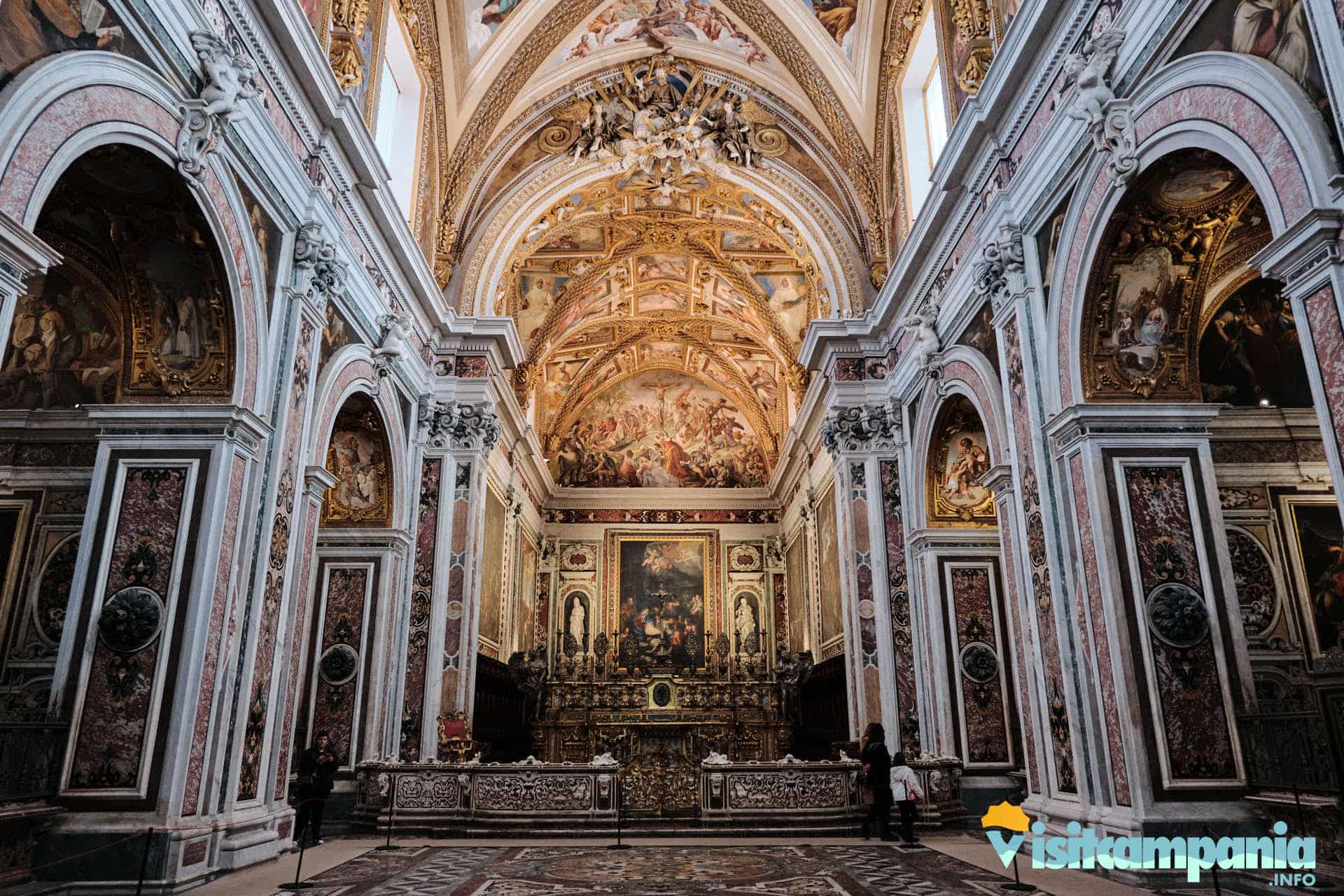
After the ticket office you enter a large internal courtyard overlooked by the Baroque Church preceded by a pronaos already richly frescoed. The interior is then a riot of frescoes, sculptures, polychrome marbles and gilded stuccoes that make it one of the best examples of Baroque art in Naples.
The church has a single nave with eight side chapels. On the sides of the apse, preceded by the presbytery, there are other rooms of great charm which can be accessed, in the visit route, from the Great Cloister.
The decorations are mainly the work of Dosio and Fanzago already mentioned but there are also masterpieces by Battistello Caracciolo, Jusepe de Ribera, Francesco Solimena and other important exponents of the Neapolitan seventeenth century.
The Cloisters and the Refectory
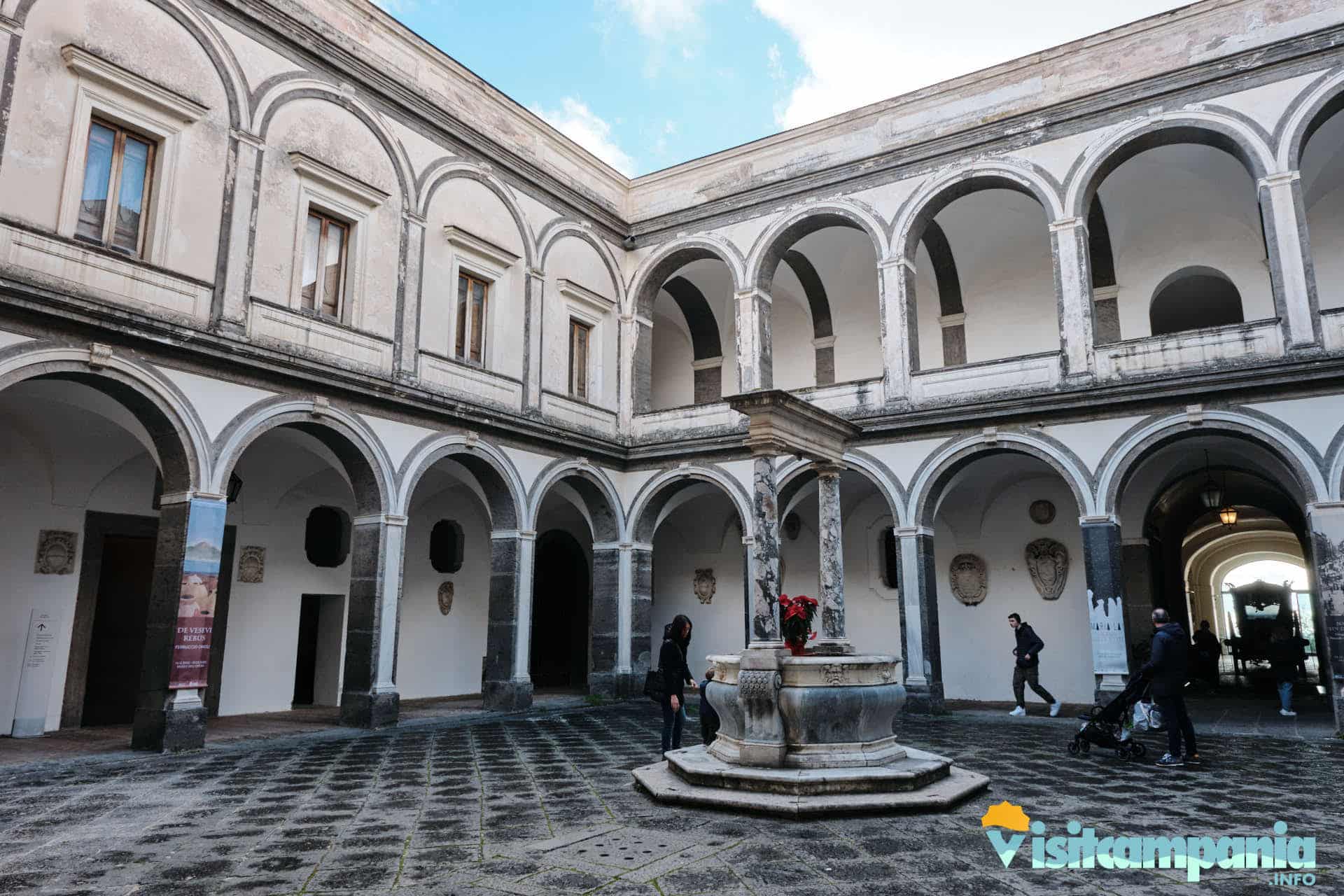
Leaving the Church, we proceed towards the Cloister of the Procurators characterized by the succession of arches, which alternate white marble with piperno, and a central well.
From this you enter the so-called Fanzaghian corridor that leads us to the Great Cloister and divides the part of the chartreuse, on the left, from the museum part, on the right. About halfway through the corridor, there is the large Refectory built in the eighteenth century by Tagliacozzi Canale. Used as a meeting place for monks on religious festivals, it has a large canvas depicting the wedding of Cana, a terracotta and majolica floor and original furniture of the eighteenth century.
From the Refectory you enter the sixteenth-century Cloister, characterized by a marble handbasin, and from these to the Chapel of the Magdalene, entirely frescoed and characterized by a fake dome in trompe-l’œil style and a canvas depicting the Magdalene. The latter is considered among the masterpieces of Andrea Vaccaro.
Back on the Fanzaghian corridor, we head to the Great Cloister.
Even this space, dating back to the original fourteenth-century structure, has been renovated and expanded with new cells in Baroque style by Dosio and Fanzago.
Of great scenic impact are, in particular, the sculptural groups that dominate the corner doors of the ambulatory. Other elements to pay attention to, in addition to the elegance and balance of the entire space, are the central well and the baroque balustrade decorated with skulls of the fourteenth-century cemetery.
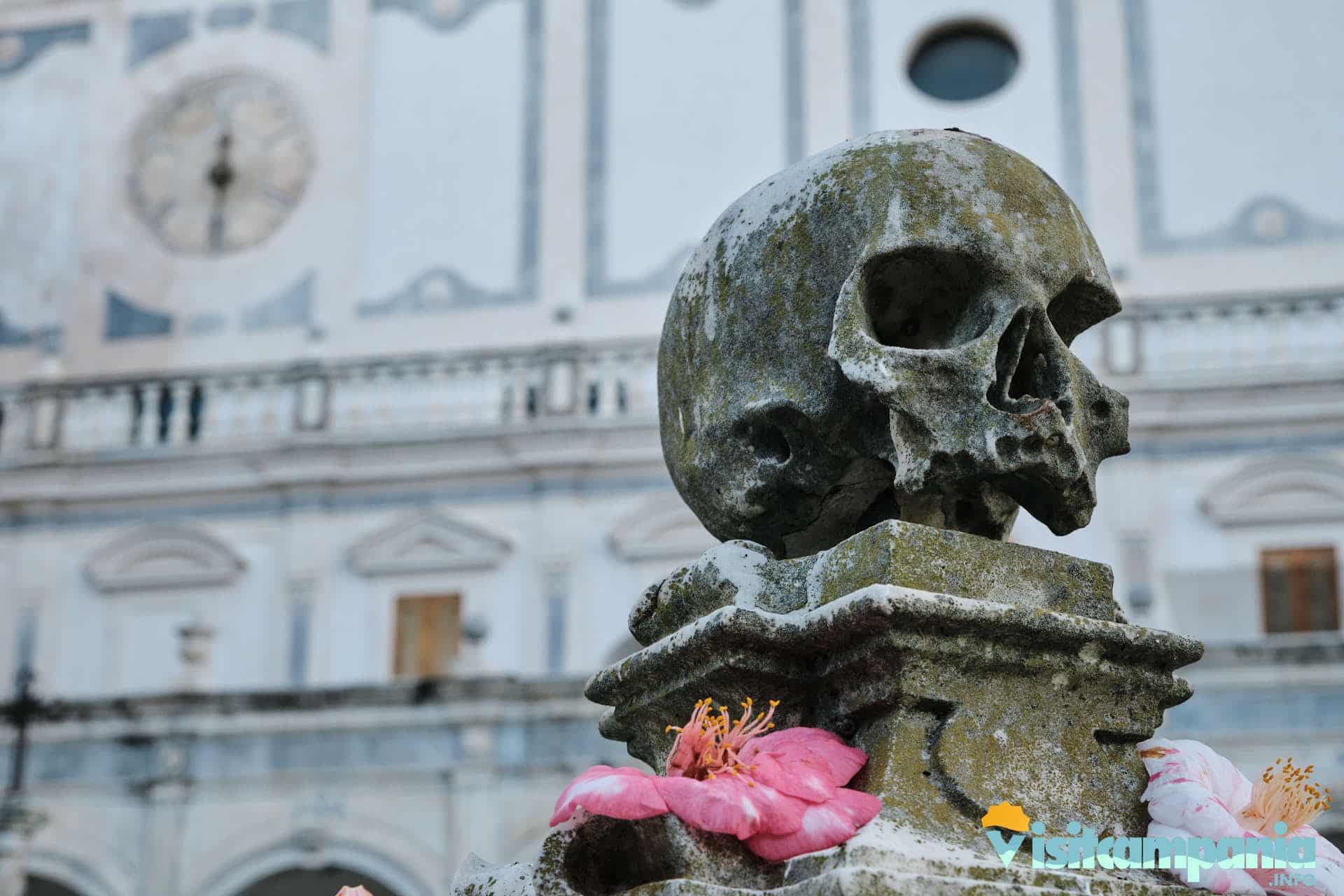
Finally, eight large statues decorate the upper level of the cloister. On the east façade there is also a large sundial.
Parlour, Chapter House, Choir of the Converses, Sacristy and Chapels of the Treasure
From the Great Cloister, a small staircase leads to the rooms of the Church located near the apse. As in the rest of the church, they celebrate the triumph of the Baroque. Golden stuccoes, canvases and frescoes, inlaid furniture, everything conveys opulence even in the muffled atmosphere that emanates from these environments. Works by de Ribera, Luca Giordano, Massimo Stanzione and other great masters of the Neapolitan Baroque also give these places a remarkable artistic value that alone justifies a visit.
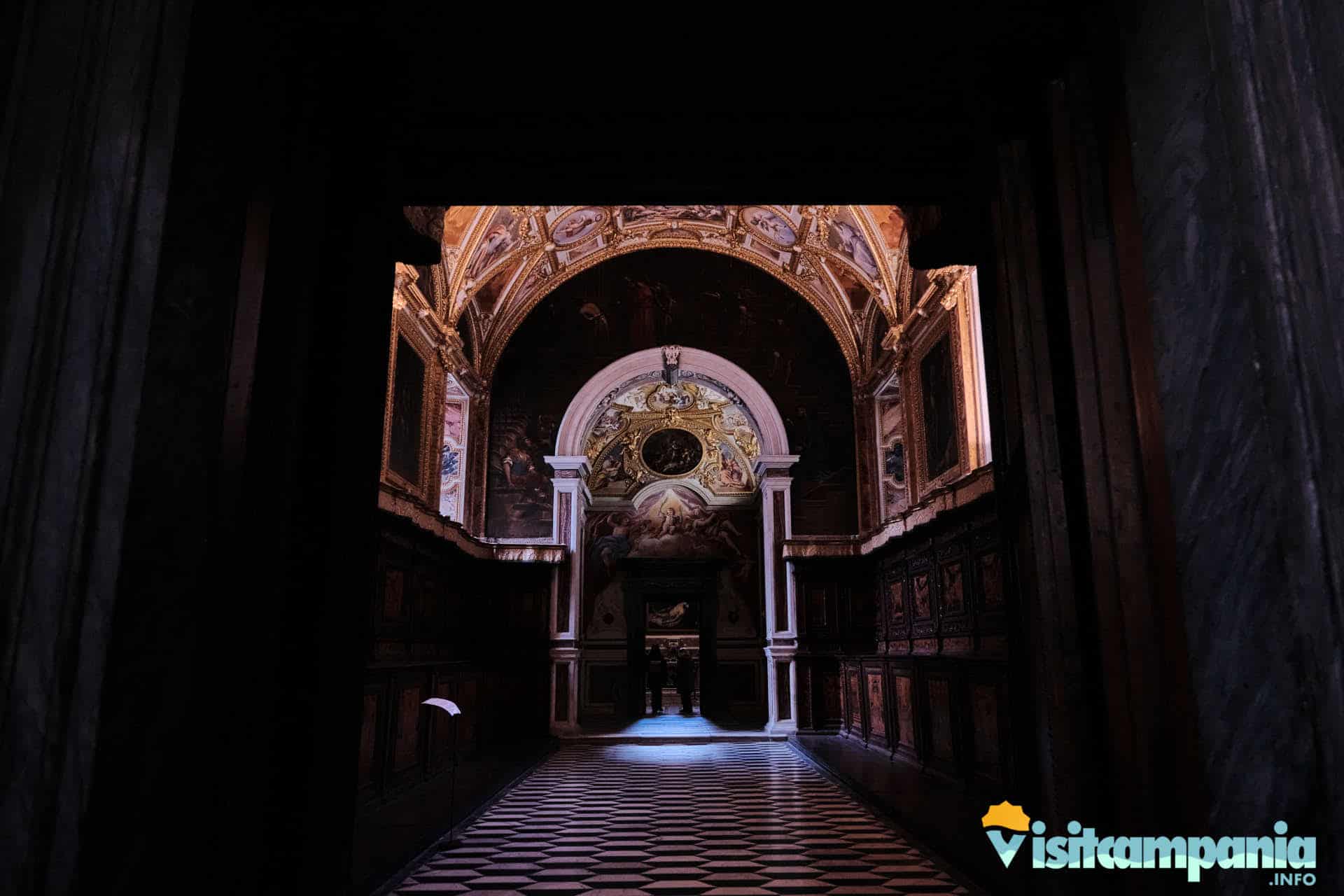
The uses are the most varied. The Parlor was destined to receive the rare external visits, the Coro dei Conversi, easily identifiable by the wooden stalls, housed the monks who did not recite mass and then the two Chapels of the Treasure, Old and New, destined to accommodate the growing treasure of the chartreuse. The latter, for the record, was requisitioned by Ferdinand IV to finance the growing military expenses due to the war with the French at the end of the eighteenth century.
The Prior’s Quarter
Located on the right side of the Fanzaghian corridor, then on the opposite side of the Church, the Prior’s Quarter consists of a series of rooms intended to welcome the prior of the Charterhouse. It introduces us to the area intended for museum exhibitions but, unlike the other exhibition environments, it still retains decorative elements of great value. In particular, the two rooms of the former library, the prior’s oratory, the rooms of the old Quadreria and the covered loggia still retain the original Baroque decorations, frescoes and majolica floors. In addition, in the rooms of the former library you can also admire frescoes of architecture in trompe-l’œil style and a darkroom sundial decorated in majolica. From the covered loggia you can admire a splendid view of the entire Gulf of Naples.
The Roof Gardens
From the prior’s quarter you enter the hanging gardens. They cover an area of seven hectares and are structured in terracing on several levels, each with a specific destination.
The first level was intended for the cultivation of healing herbs for the pharmacy of the chartreuse. The second level, however, was intended for the prior’s garden and has a long eighteenth-century pergola. Finally, the lower levels housed the vineyards of the monks.
Since 2010 they have been declared a place of artistic and historical interest.
The Gothic underground
We complete the visit of the best preserved area of the original complex of the chartreuse of San Martino with the Gothic basement dating back to the original fourteenth-century plant. Carved into the tuff, they have pillars and ogive vaults over fifteen meters high. There are about 150 works including epigraphs and sculptures dated between the thirteenth and seventeenth centuries.
The Museum of San Martino: collection of works of art and historical documents
After completing the visit of the places of the chartreuse it is time to enter the museum section. This is spread over two levels mainly in the south wing of the convent. A part of the collections, however, is housed in rooms that give directly onto the Great Cloister on the opposite side of the Fanzaghian corridor.
The collections of the chartreuse and Museum of San Martino, aimed at preserving and witnessing the history of Naples, capital of the Southern Kingdoms, are:
- Naval Section
- Carriage hall
- Nativity section
- Prior’s Quarter
- Pharmacy apothecary of the monks
- Nineteenth century Neapolitan
- Images and memories
- Prints and Drawings Cabinet
- Theatrical section
- Decorative arts
- Opera Museum
Without going into details, I provide you with only a few but salient information to organize your visit.
The naval section
It is housed in two large rooms that reproduce the appearance of an ancient arsenal. It houses various scale models of boats launched, mainly, by the shipyards of Naples and Castellammare di Stabia between the eighteenth and nineteenth centuries. In addition, a number of historical documents, white weapons and nautical instruments are exhibited. However, the highlights for historical importance and visual impact, are the two Royal spears belonging, respectively, to Charles of Bourbon and Umberto I of Savoy.
Carriage hall
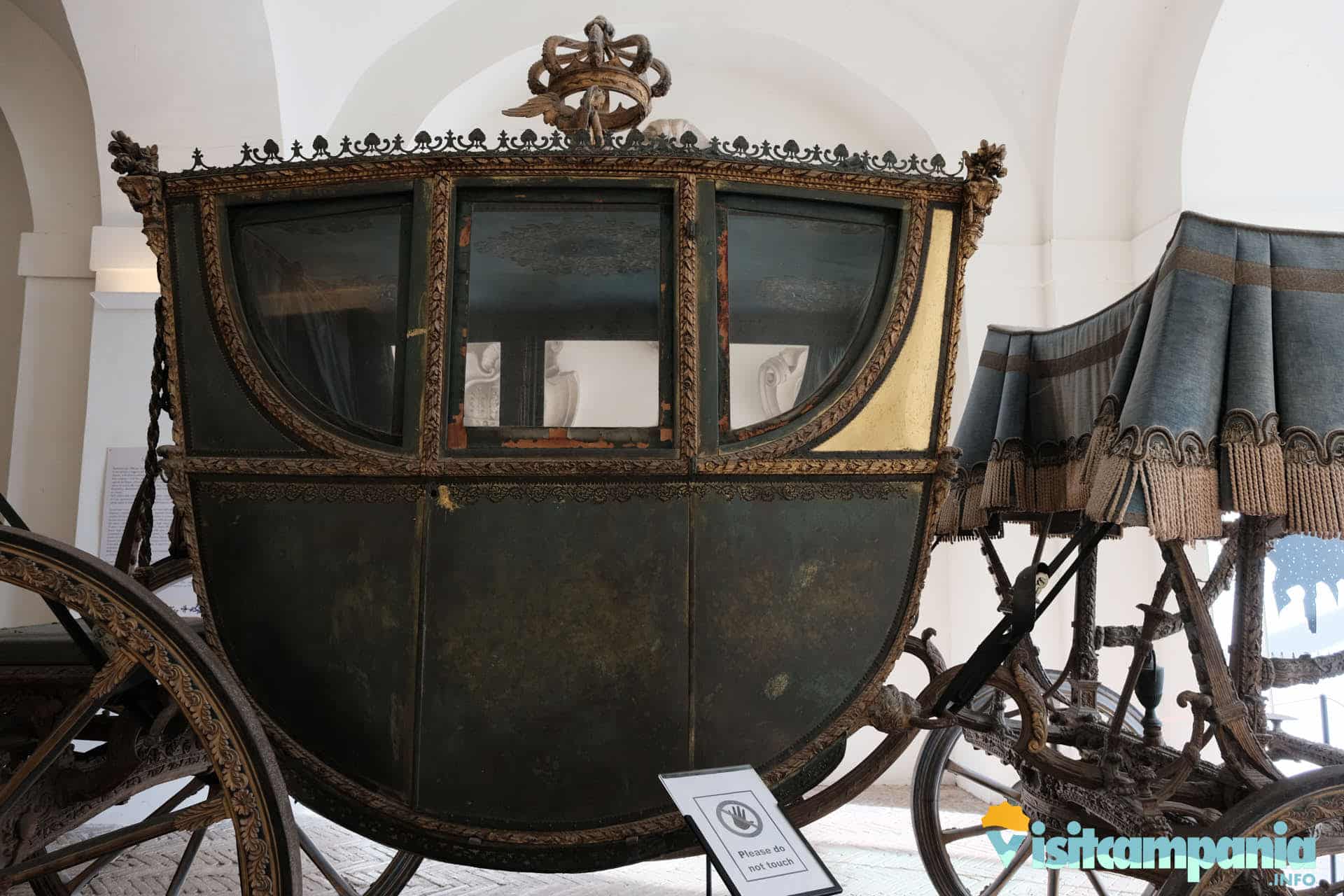
It is the covered space that connects the cloister of the Procurators to the hanging gardens inside the Chartreuse and Museum of San Martino. There are two carriages, the carriage of the Elect, built at the behest of the Court of San Lorenzo, and the carriage of Maria Cristina of Savoy. In the entrance hall there is also the Column of the Vicariate, coming from Capuano Castle always in Naples, where insolvent debtors were exposed and humiliated starting from the Spanish vice kingdom (XVI century). The barbaric custom was abolished only with the advent of the Bourbons in the eighteenth century.
Nativity section
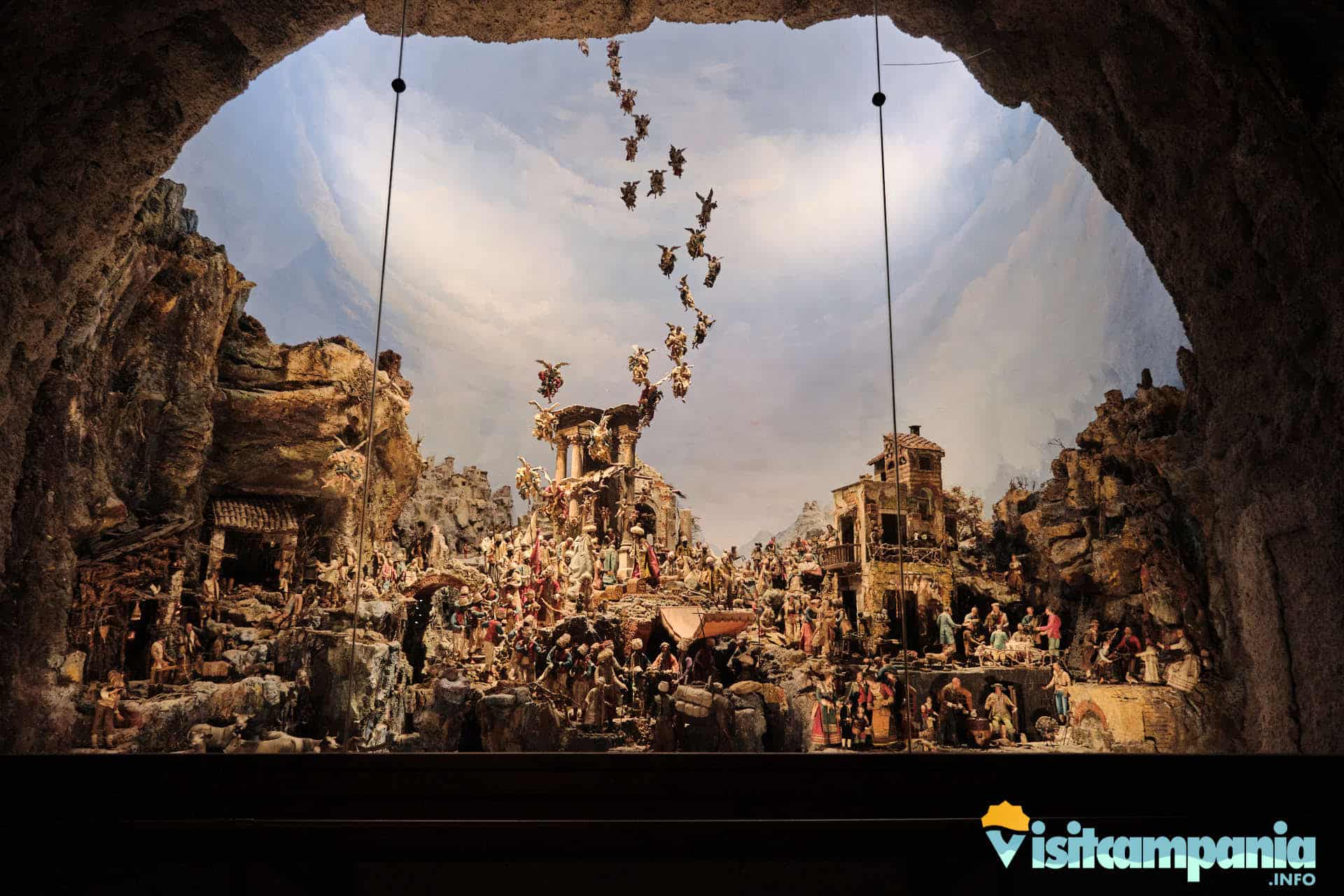
It is the main Italian public collection dedicated to the Neapolitan nativity scene. Housed in the ancient kitchens of the chartreuse near the Fanzaghian corridor, it consists of various crib groups of mainly eighteenth-century origin even if there are previous pieces including a splendid wooden Virgin of the fourteenth century. The main piece, around which the entire collection revolves, is the grandiose Cuciniello nativity scene, donated in 1879 by Michele Cuciniello. It is exhibited in a specially built cave equipped with lighting that simulates the day/night alternation.
Prior’s Quarter
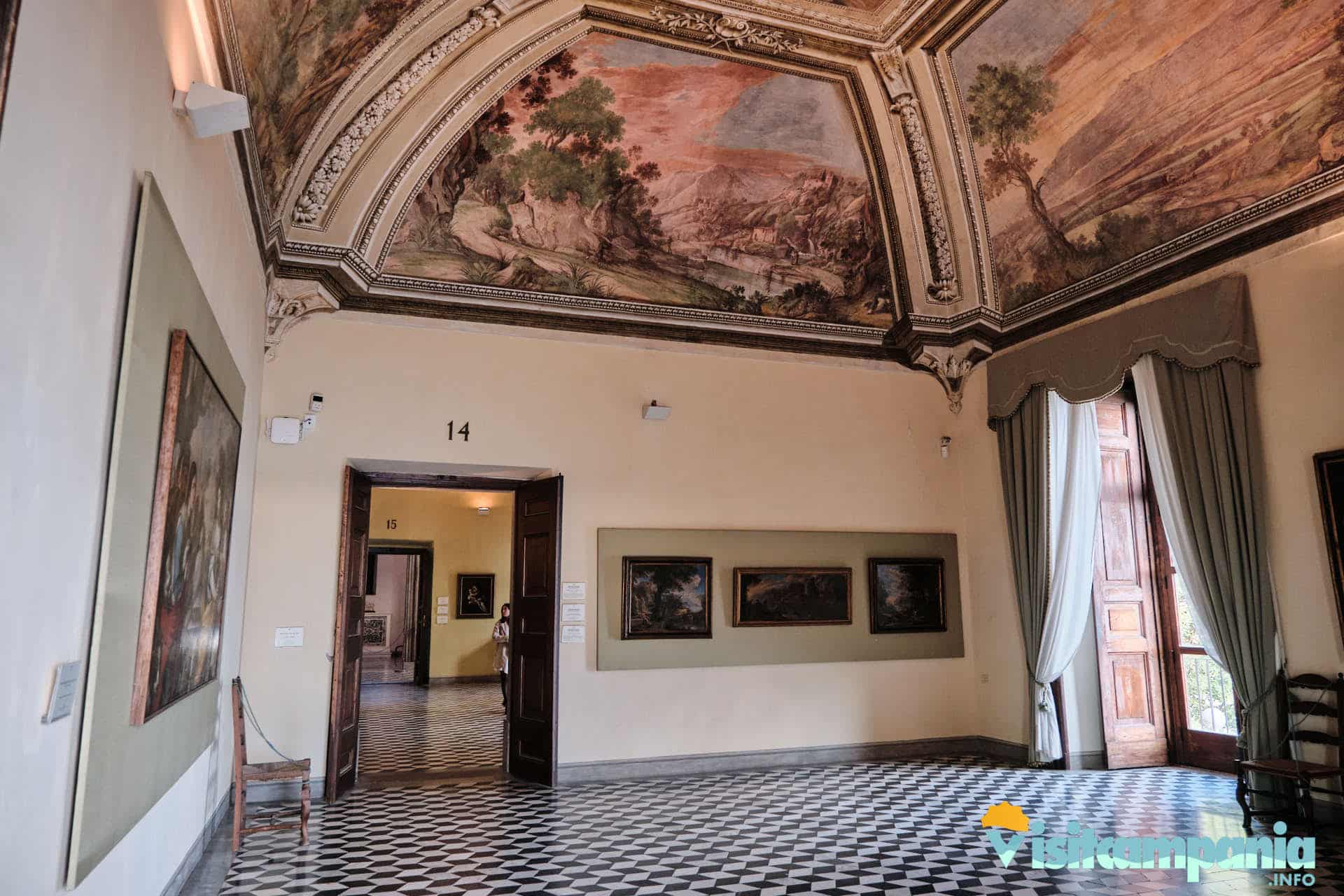
We have already talked about the fourth before, describing it from an architectural point of view. In addition to this, the quarter of the Prior also houses an important collection of paintings dating from the seventeenth and eighteenth centuries by artists of the caliber of Jusepe de Ribera and Artemisia Gentileschi. Finally, there are also precious chinoiserie and white weapons and firearms.
Pharmacy apothecary of the monks
Founded in 1699 to cure the monks, it presents a fresco of St. Bruno interceding for the sick with the Virgin. There are exposed historical vases that belonged to the pharmacy itself. The highlight is the sketch of the Veiled Christ made by Antonio Corradini who was also supposed to execute the sculpture. However, Corradini, who died in 1752, did not have time to execute the work that was entrusted to a young Neapolitan sculptor, Giuseppe Sanmartino, who, deviating in part from the original sketch, managed to create a work of extraordinary artistic value and emotional impact. The Veiled Christ is, today, one of the unmissable Neapolitan treasures and is exhibited in the San Severo chapel in the center of Naples.
Nineteenth century Neapolitan
Set up in the rooms of the ancient guesthouse, it houses works of the nineteenth century related to Neapolitan art. It is structured in two collections, Paintings of historical subjects and Artistic section. The first houses paintings made to document the transformation of the places by the Risanamento, an important urban and hygienic-sanitary redevelopment activity implemented in Naples by the mayor Nicola Amore following the cholera epidemic of 1884 that radically transformed entire neighborhoods of the city. The second testifies to the Neapolitan painting linked to the Academy of Fine Arts, still active, and to the so-called School of Resin.
Images and memories
It documents the history of Naples from the fifteenth to the nineteenth century. It retraces, through works and documents of various kinds, the Angevin and Aragonese history, the Spanish Viceroyalty, the Bourbon kingdom up to the Unification of Italy. It includes a series of portraits of the kings of the House of Bourbon and represents one of the most characteristic features of the Museum of San Martino.
Prints and Drawings Cabinet
The collection consists of more than 16,000 sheets organized into different collections. These include architectural drawings, views of the School of Posillipo, views of gouache (watercolor painting technique of French origin), maps of Naples, portraits and historical Neapolitan subjects.
Theatrical section
It consists of works of various kinds (paintings, sculptures, prints, photographs, memorabilia) related to the world of theater and Neapolitan scenography. Among these there is no shortage of portraits of actors, playwrights and musicians. Among the most interesting pieces, theleather mask and the portrait of Giancola, Sicilian actor but Neapolitan by adoption, who at the turn of the eighteenth and nineteenth centuries interpreted and brought success to the character of Pulcinella.
Decorative arts
It consists of a rich collection of majolica, porcelain and ivory and coral objects made between the sixteenth and nineteenth centuries. Among the pieces, which include Murano glass and porcelain decorated with views of Naples, the biscuit porcelain collection stands out (a particular process that makes porcelain similar to marble) from the Royal Porcelain Factory of Naples.
Opera Museum
Exhibition dedicated to testimonies of the life of the chartreuse. It includes portraits of Priors and founders of the Order, a room dedicated to Cosimo Fanzago and nineteenth-century paintings documenting the life of the Charterhouse.
Tips and curiosities
- The entrance ticket to the Chartreuse e Museo di San Martino, as well as at the physical ticket office at the entrance, can also be purchased online. In addition, if you are planning to visit other monuments of the rich regional heritage, consider buying the Artecard card, the official tourist pass of the Region, in one of its various formats that will save you time and money;
- From 3 April 2022, with the easing of the COVID emergency, the possibility of free access to state museums returns on the first Sunday of the month. Always check on the official website or call the contact center (+39 081 2294503) before organizing your trip;
To learn more
- Regional Directorate of Campania Museums;
- Wikipedia – The chartreuse of San Martino;
- Italian museums. RipARTiamo – Chartreuse and Museum of San Martino (video);
Important note
Currently (February 2023) the first floor and the naval exhibition area are subject to restoration work and are, therefore, not accessible.

